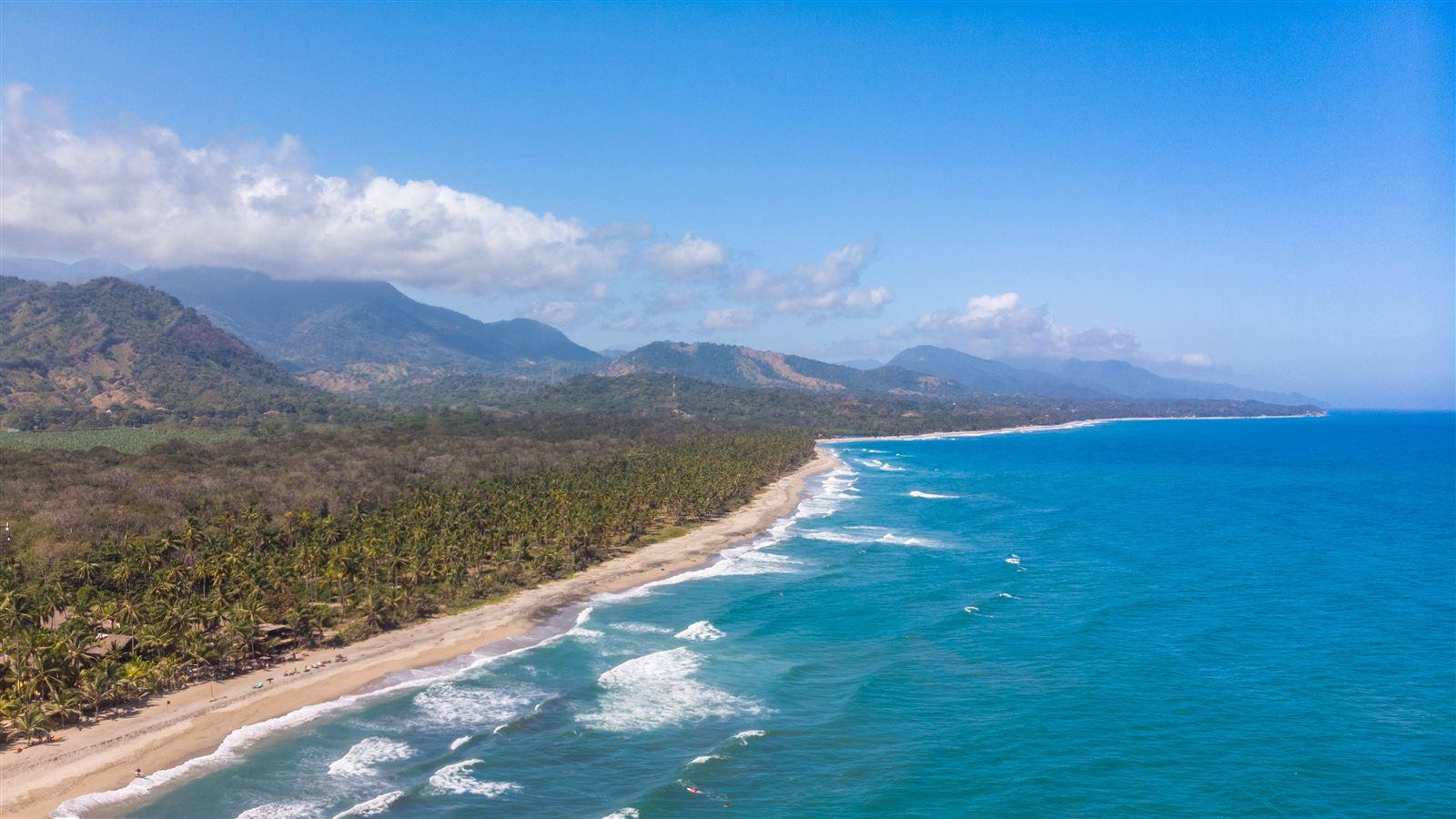Restoring Colombia's Coastline
Since 2020, the Ministry of Environment of Colombia (MinAmbiente) has prioritized several ecosystem-based coastal protection projects to combat the effects of climate change on the country’s Caribbean coast. These efforts include reforestation, rehabilitation and protection of mangroves, renaturation of beaches and dunes, as well as management of seagrass beds. The German Federal Ministry is supporting the efforts through project funding created by the KfW International Climate Initiative (IKI), a commitment to climate financing and biodiversity projects in developing and industrialized countries.
In the past, combating climate change on the coast of Colombia has been exclusively implemented through gray infrastructure methods; built-environment techniques such as jetties and breakwaters. Though these tactics have proven successful, they lack the longevity and protection of green infrastructure, nature-based solutions. Colombia’s shift to a hybrid of gray and green infrastructure will provide coastal regions with long-term environmental protection from extreme weather events and sea level rise, while simultaneously rehabilitation the local natural environments.
I am grateful to support project staff of the Colombia Ministry of Environment... with ecosystem-based adaptation measures to create benefits for local communities and ecosystems.
After identifying environmental, social, safety, and health risks, the team adapted management systems, including a flexible “traffic light” methodology to ensure that the global standards for Ecosystem based Adaptation (EbA) were on track. The team prioritized protecting mangrove forests, beaches, and seagrass beds in 12 pilot projects across four Colombian provinces. Community outreach has been key to securing the long-term livelihood of these beautiful coastal areas, through raising awareness among communities and stakeholders to identify the ecological and economic significance of the ecosystems to garnering public involvement.
The Government of Colombia has adopted ecosystem-based adaptation methods as a core strategy to stabilize coastal land sections. Projects can be classified as ecosystem-based if they:
- Reduce social and environmental vulnerabilities
- Generate societal benefits in context of climate change adaptation
- Restore, maintain or improve ecosystem health
- Are supported by multi-level policies
- Support equitable governance and enhance capacity
At one pilot project located in Cispata, Colombia, mangrove restoration has been established after carbon stocks in mangrove forests along the region’s coast were closely monitored, while raising awareness of the plant’s significance. Mangroves serve as a buffer between marine life and the shores, while protecting the delicate ecosystems from damaging coastal winds, waves, and floods. The thickets also improve water quality by filtering pollutants and trapping sediments, and they even serve as a home to organisms on land and in sea. These plants store up to 10x more carbon than the typical forest tree, so their destruction is far more of a detriment to the environment when their carbon stores are released. The mangrove protection in Cispata has been crucial to long-term environmental improvement, and the pilot has been awarded gold-level community and biodiversity certification.
Another ecological restoration pilot project on the beaches of Ciénaga, Colombia, is fighting coastal erosion with uva de playa, also known as sea grapes. The project includes planting over 15,000 seedlings along 1.5 kilometers of shoreline, engaging local communities and the regional and local environmental authorities to stabilize the coast and secure sand dunes in place once they are grown to full size. A wind-resistant and saltwater tolerable plant, the sea grape is a resilient choice to provide land stability and habitats for sea life.
While gray infrastructure methods of shoreline and dune restoration yield prompt results, the effects typically lack longevity, require strict upkeep, and involve greater time investments. By complementing existing gray infrastructure with green infrastructure, these regions of Colombia’s coastline will be fortified through natural solutions that are simultaneously rehabilitating their ecosystems. The project also strengthens the capacities of the National Environmental System (SINA), through the implementation of a web-based information and monitoring platform for coastal erosion and the impact of Ecosystem based Adaptation measures to combat coastal erosion.
"Thanks to Matthias’ vision and guidance to attract the right partners and develop a comprehensive methodology to implement suitable infrastructure to combat climate change effects on Colombia’s Caribbean coast, this project was delivered in record time. We are proud to have supported such a meaningful project," says Eric Kalmbach, senior civil engineer and head of the development assistance sector of CDM Smith Germany.

We developed a comprehensive methodology to combat climate change effects on Colombia’s Caribbean coast.











